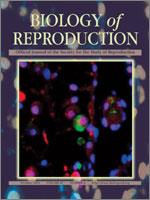Spermatogonial stem cell (SSC) self-renewal and differentiation are required for continuous production of spermatozoa and long-term fertility. Studying SSCs in vivo remains challenging because SSCs are rare cells and definitive molecular markers for their identification are lacking. The development of a method for propagating SSCs in vitro greatly facilitated analysis of SSCs. The cultured cells grow as clusters of a dynamic mixture of “true” stem cells and differentiating progenitor cells. Cells in the stem/progenitor culture system share many properties with spermatogonia in vivo; however, to fully exploit it as a model for spermatogonial development, new assays are needed that account for the dynamic heterogeneity inherent in the culture system. Here, assays were developed for quantifying dynamics of cultures of stem/progenitor cells that expressed histone-green fluorescent protein (GFP). First, we built on published results showing that cluster formation in vitro reliably predicts the relative number of SSCs. The GFP-based in vitro cluster assay allows quantification of SSCs with significantly fewer resources than a transplantation assay. Second, we compared the dynamics of differentiation in two experimental paradigms by imaging over a 17-day time frame. Finally, we performed short-term live imaging and observed cell migration, coordinated cell proliferation, and cell death resembling that of spermatogonia in the testes. The methods that we present provide a foundation for the use of fluorescent reporters in future microscopy-based high-throughput screens by using living spermatogonial stem/progenitor cultures applicable to toxicology, contraceptive discovery, and identification of regulators of self-renewal and differentiation.
BioOne.org will be down briefly for maintenance on 17 December 2024 between 18:00-22:00 Pacific Time US. We apologize for any inconvenience.
How to translate text using browser tools
29 August 2012
Development of Quantitative Microscopy-Based Assays for Evaluating Dynamics of Living Cultures of Mouse Spermatogonial Stem/Progenitor Cells
Crystal N. Heim,
Danielle A. Fanslow,
Christina Tenenhaus Dann
ACCESS THE FULL ARTICLE

Biology of Reproduction
Vol. 87 • No. 4
October 2012
Vol. 87 • No. 4
October 2012
Cell death
differentiation
germ cell
green fluorescent protein
lentivirus
live imaging
spermatogenesis




